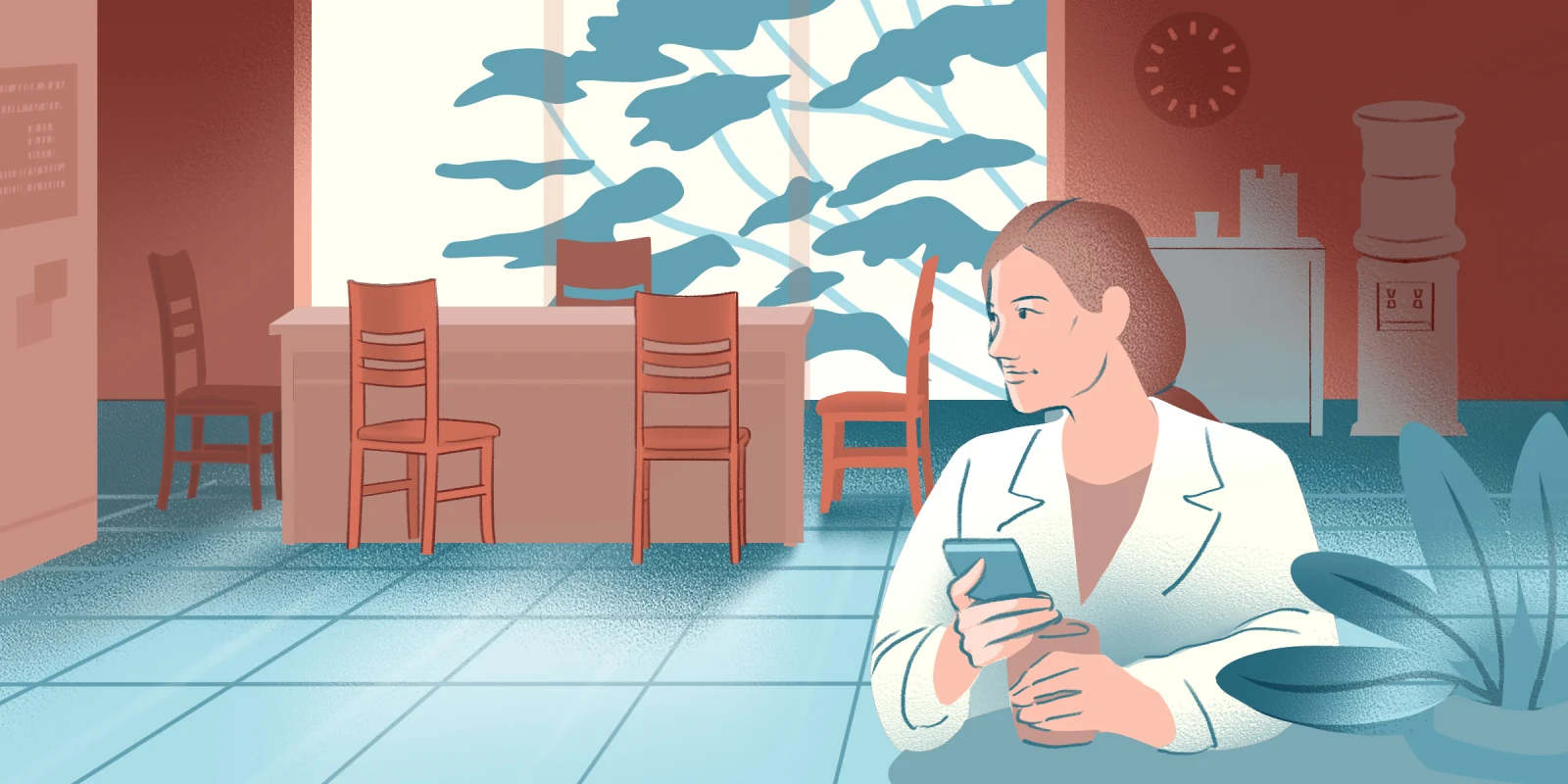Many of us are just becoming acquainted with the term neurodivergence, created to contrast atypical mental and neurological function with what is neurotypical or “normal.” Some brief history: Several decades after autism spectrum disorder (ASD) and Asperger’s were included in the DSM, sociologist Judy Singer coined the term neurodiversity, sensing that a new sociopolitical movement was underway. A decade later in 2015, after autism was broadened out to autism spectrum disorder in the DSM, reporter Steve Silberman popularized the term neurodivergent in his foundational book “NeuroTribes: The Legacy of Autism and the Future of Neurodiversity.”
Today, “neurodivergent” has been claimed as an identity by persons who are bipolar, dyslexic, and/or highly sensitive (HSP), and those living with disorders like ASD, attention-deficit/hyperactivity disorder (ADHD), and/or sensory processing disorder (SPD). Currently, about 20% of the population identifies as neurodivergent. Women in particular, especially those in their 30s and 40s, have been described as the “missing demographic” of this 20%, only recently accepted as contributing to at least half of the neurodivergent population.
Below, I discuss the challenges neurodivergent people experience; how the female population casts a different light on neurodivergence; the gifts and particular skill set neurodivergent people bring to the table; and why neurodivergent traits can render this population especially suited to the health care profession.
How Neurodivergence Manifests
In her book “Divergent Mind: Thriving in a World That Wasn’t Designed for You,” Jenara Nerenberg discusses five “neurodivergences” at length: HSP, ADHD, ASD, SPD, and synesthesia. All five have in common heightened sensory sensitivity, and in turn, an intense reaction to sensory overload. What is overwhelming for each neurodivergence varies: overstimulation in autism/Asperger’s; the emotions of the self in ADHD; smells/textures in SPD; depth of sensorial, explanatory, and informational processing in HSP; and the strong emotions/suffering of others in synesthesia.
When a neurodivergent person feels there are too many external stimuli to process, they can have a type of “meltdown,” which involves demonstrating frustration and sometimes removing the stimulus. This can look like anything from locking themselves in a dark room, stimming (like rocking), yelling, or even self-harm. Sometimes these meltdowns can be followed by a shutdown period, thought to be a protective mechanism for the brain to excessive stimuli, whereby the person can become dissociated, lack energy, and have an intense desire to be alone.
The Missed Demographic
It has only been in the most recent 10 years or so that women have been recognized as having been disregarded within the neurodiverse population. It is thought that their diagnosis occurs later in life due to “masking,” aka suppressing differences in emotional expression and behavior in order to meet the normative expectations of society, and ultimately to survive with more ease. Also called ‘camouflaging,’ this phenomenon has been identified as being far more prevalent in women, who culturo-historically are taught to “fit in” and pick up on social cues. When compared to neurodivergent men, neurodivergent women are more susceptible to increased sensitivity to emotional and sensory stimuli, and it is not surprising that this places them at higher risk of anxiety, depression, suicidal ideation (and completion, relative to neurotypical women), self-harm, eating disorders, and chronic pain.
The Strength of Neurodivergence
Oftentimes, a neurodivergent person’s reaction to stimuli can be misconstrued as apathy or indifference, when in some cases, it appears that persons who identify themselves as neurodivergent have an overabundance of empathy. Indeed, brain imaging has demonstrated that some brain regions in HSPs are more active in the “integration of sensory information, awareness, and empathy” (Nerenberg, pp. 38).
These sensory abilities must be reframed away from “pathological” toward “beneficial.” Pathology, after all, is a social construct. Research has shown that many neurodivergent traits are actually incredible strengths. For example, HSPs, whose “nervous systems are more attuned to subtleties in the environment,” have been shown to thrive in various fields, including the medical realm, where they “excel in perception, detecting nuances, and understanding others” (Nerenberg, pp. 38). Similarly, those with ADHD have been found to be more creative and proactive than others, as well as able to work skillfully under pressure and adapt easily to change. Likewise, according to a Harvard Business Review case study, people with Asperger’s excel in steady work, bringing an intense focus and thoroughness to their projects. And as just one more example out of many, people with dyslexia are skilled at visual processing, able to think ‘outside-the-box’ and find hidden connections and trends.
Given the above capabilities, neurodivergence can be a valuable asset to the health care profession. In medicine, it can look like a particularly empathic psychiatrist who is able to connect and build trust with patients quickly and easily. Or like an internist who is able to put the pieces (signs and symptoms) together and find the unifying diagnosis after many others have been stumped. Or like a pathologist who thinks in pictures and color and can recall histopathology slides on demand when analyzing tissue of unknown origin. Or like a neonatologist who perceives subtle social and emotional cues from the parents of a preterm infant after birth, helping arrive at the concern for postpartum depression.
In addition, our neurodivergent colleagues offer perspectives that can create an opportunity for more satisfying work environments. Margaux Joffe, then the head of production for Yahoo’s Global Marketing Department, shared with Nerenberg that “neurodivergent individuals are great people to go to when you want to get a temperature check on how people are feeling in a [workplace], because they’re probably picking up on everything. [They] are also more unfiltered and say what [they] think and feel and have a lower tolerance for bullshit” (pp. 184).
How to Support Our Neurodivergent Colleagues
In physicians, neurodivergence may be under-identified — perhaps because, as a family medicine physician quoted in an article on neurodiversity in medicine explains, “medicine filters for ‘high-functioning, intelligent, and conscientious’ people whose strengths may mask difficulties.”
How, then, can we best support our neurodivergent colleagues? The answer is simple, but relies on making deliberate changes.
At the educational level, we can provide trainings in neurodiversity in medical school (and beyond) to help people understand the nuances and complexity of the neurodivergent experience. And in the workplace, we can offer strategies to help neurodivergent individuals, particularly women, thrive in their careers. For instance, we can extend such individuals opportunities that rely more on creative than on linear thinking. We can provide work environments that are more soothing to the senses, such as with natural lighting and plants. We can rely on these individuals’ honest and authentic communication, helping to build trust. And, perhaps most importantly, we can offer a workplace that is welcoming to those who process external stimuli in different ways — as acceptance in the work environment does not just encourage people to do their best but is a part of general well-being.
Do you identify as neurodivergent? How has it been an asset in your career? Share in the comments!
Dr. Giulia Faison is a neonatologist and budding bioethicist in Southern California. She enjoys yoga, running, and recently has picked up surfing. As a mom of four, exposing her children to the world is a priority. Dr. Faison was a 2023–2024 Doximity Op-Med Fellow.
Illustration by April Brust







